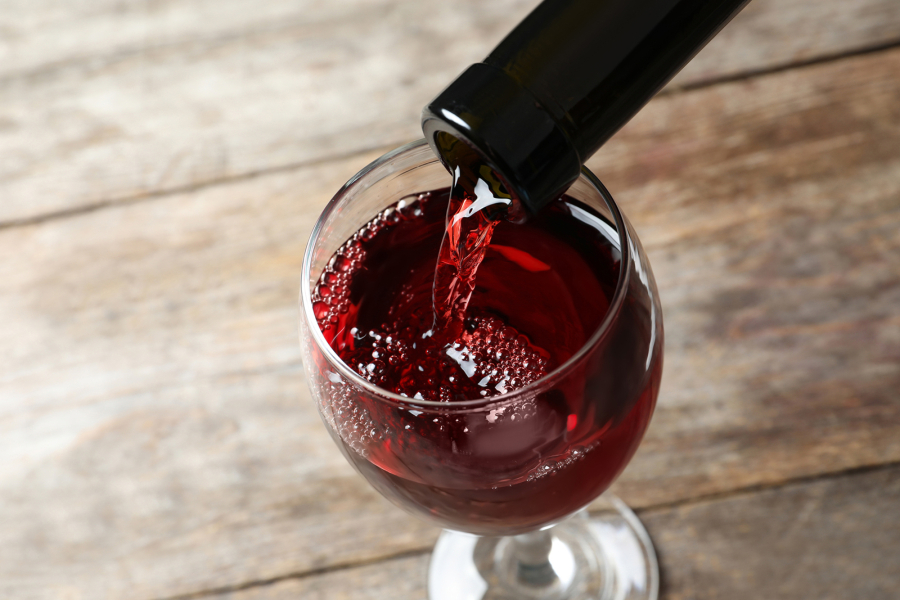PHILADELPHIA — Drinking alcohol in moderation is generally defined as having one drink a day for women, two for men. But even those modest-sounding amounts may have negative impacts on the brain, a new study led by University of Pennsylvania researchers suggests.
People who drank the equivalent of just one daily glass of wine — or one can of a higher-potency beer such as India pale ale — were found to have slightly smaller brains, on average, than nondrinkers.
The apparent effect from one daily drink was equivalent to two additional years of brain aging for a typical 50-year-old, the authors determined by analyzing MRI scans of more than 36,000 middle-aged people. And the connection grew sharper with more alcohol: On average, the brains of those who consumed two daily drinks looked 10 years older than those of nondrinkers.
The researchers could not say for sure that moderate alcohol use caused brain shrinkage, as the scans represented a snapshot in time, among other limitations in the study.
Yet the findings were concerning enough that several of the authors have cut back on their own alcohol consumption, said Reagan Wetherill, one of the study leaders. A research assistant professor of psychiatry at Penn’s Perelman School of Medicine, she said she already limited herself to an occasional glass on weekends, and plans to continue.
“We’re told that moderate or low levels of alcohol are safe,” she said. “But we saw that there was a global basic effect on brain volume even at one drink.”
Study participants who reported consuming at least one daily drink also exhibited reduced “integrity” in the white matter that insulates brain cells, the authors reported in Nature Communications.
“It’s basically like having a wire that’s a little frayed,” Wetherill said.
The people in the study were drawn from the UK Biobank, a powerful database of health information that has been mined for thousands of studies worldwide. Recently, the database was used to identify reduced brain volume in people who have recovered from COVID-19, though it is not yet clear whether those changes are meaningful or long-lasting.
As for the alcohol study, one compelling aspect is that it included the whole spectrum of drinking, authors said. Most previous brain-imaging studies have not included moderate drinkers, instead comparing the brains of heavy drinkers with those who consume little to no alcohol.
And the large study size enabled the team to detect subtle signals that might otherwise have been lost in the statistical noise of a smaller sample, said Wharton School researcher Gideon Nave, another of the team leaders.
“The data are very clear that there is a reduction,” he said.
Two experts not involved in the study cautioned that the differences in the brain volume identified in moderate drinkers might not translate to a noticeable difference in brain function. Additional study with cognitive evaluations would be useful, said Anya Topiwala, a senior clinical researcher in psychiatry at the University of Oxford in England.
Another limitation: The study relied upon the participants’ self-reported alcohol use in the previous year, said Catherine Fortier, a psychologist at the VA Boston Healthcare System and an assistant professor at Harvard Medical School. A validated assessment of lifetime alcohol consumption would make the findings stronger, she said.
Still, the detection of smaller brain volumes in people who had just one drink a day was “remarkable,” Fortier said.
Some smaller studies have suggested that one drink a day might have a beneficial effect on the brain. But Topiwala’s own research and the new Penn study both indicate otherwise, she said.
Likewise, don’t place too much stock in those studies suggesting that a daily glass of wine is associated with better cardiovascular health. Researchers have been unable to prove that wine deserves the credit, according to the American Heart Association.
If anything, the reverse might be true. Chronic alcohol use has been linked to an increase in blood pressure, along with an increased risk of certain cancers.
In the new brain study, the apparent effect of alcohol use held true regardless of other factors that are known to play a role in brain size, such as age, smoking, and socioeconomic status.
A drink was defined as two “units” — 20 milliliters — of pure alcohol, the amount in a typical glass of wine, though the exact amount varies with how strong the wine is.
There is even more variability in beer. Look at the fine print on the label to find the percent alcohol by volume, sometimes abbreviated ABV.
A typical lager beer is 4.5 percent alcohol. A 12-ounce can works out to a bit less than two units of alcohol (one “drink”).
Many India pale ales and other craft beers, on the other hand, measure at least 6.5 percent alcohol, so a 12-ounce bottle or can contains a bit more than two units of alcohol. Just one can of IPA, in other words, is associated with the brain changes identified in the study.



